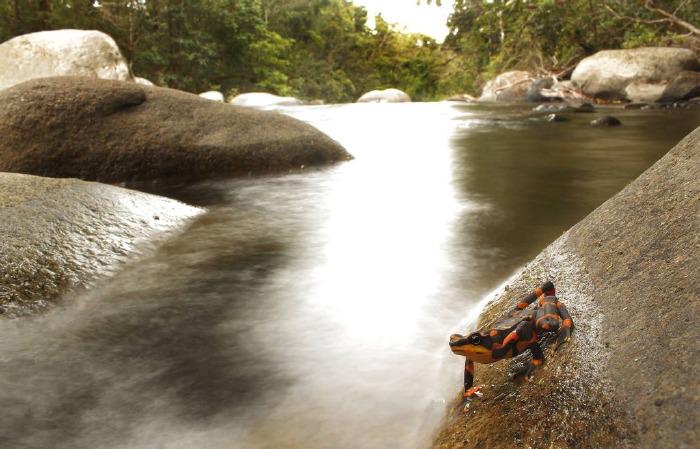Diego Alejandro Gómez Hoyos
Other projects
25 May 2023
Scaling Up a Successful Conservation Program: Saving the Critically Endangered Atelopus varius in Costa Rica
The Harlequin frog, Atelopus varius, was considered extinct in 1996, but in 2008 we rediscovered a remnant population in Costa Rica. Since then, we have identified threat factors: chytrid fungus and habitat degradation, as well as carried out a preliminary assessment of the population dynamics. Research on these factors’ effect is urgent, and it is necessary to implement conservation actions from an integral approach to be successful on the long-term. Our strategy includes working together with local communities to ensure this. The species’ habitat is the water source for the community-managed aqueduct, thus conserving their water resource they conserve the Harlequin frog’s habitat. We will design and propose conservation actions according to the threats’ effect and conservation opportunities with local communities (e.g. making a flagship species of their community-managed aqueduct).
Therefore, our main goal is to prevent extinction of the Harlequin frog in the region, through an integral conservation program for the species and its habitat based on scientific knowledge and involvement of the community to maintain this in the long term.

Atelopus varius.
Since rediscovering the population, we have studied population parameters and assessed threats that can lead to the population’s decline. We found individuals infected with the fungus Batrachochytrium dendrobatidis (Bd), which causes a disease that has wiped out many amphibian populations worldwide. We have also identified habitat degradation, which is a landscape level threat and affects the Cotón river micro-basin (main Harlequin frog habitat). This river is the main source of water for 24 neighbour communities. Therefore, conserving this habitat brings benefits to both the Harlequin frog and the local people.
Although the scenario seems bad, there are conservation opportunities for the species and its habitat in the long-term. The main opportunity is involving the community in our conservation program, because the community-managed aqueduct takes and processes the water in the main Harlequin frog habitat.
We decided to undertake this work because we rediscovered the population and think it is important to not only report the population tendency but also take actions to prevent its extinction.
We want to know more about the current population status and the effect of threat factors to implement management actions involving the community. This way we will mitigate or eliminate threats and avoid the extinction of the species. Together with the community and the aqueduct board we want to create a precedent of a successful participative conservation program, with a positive impact on conservation, since we will produce a guide-line that can be used for other amphibian conservation issues.
For example, we are in the process of designing a plan to make the Harlequin frog a flagship species of the aqueduct and involve and empower the community to help with the conservation of this species and its habitat. Local people are proud to belong to Central America’s most important community-managed aqueduct and they have shown interest in the amphibian biodiversity that their river harbours.